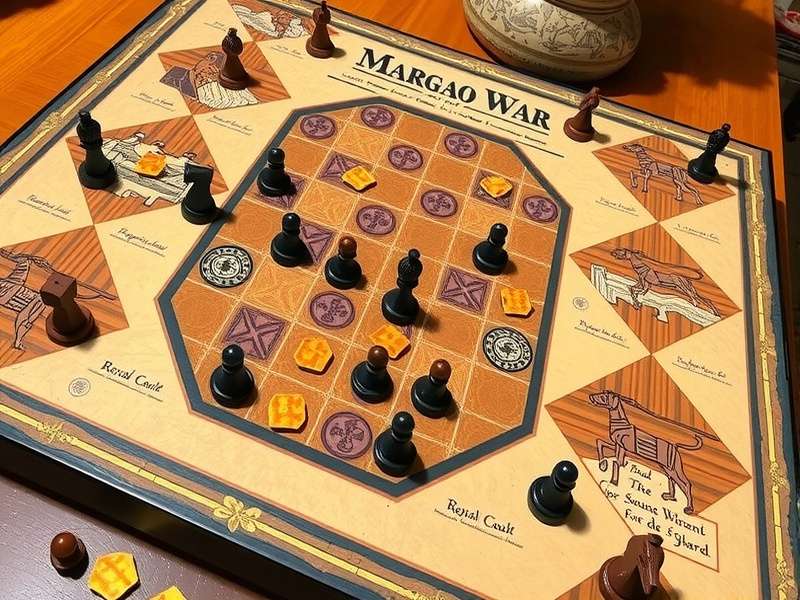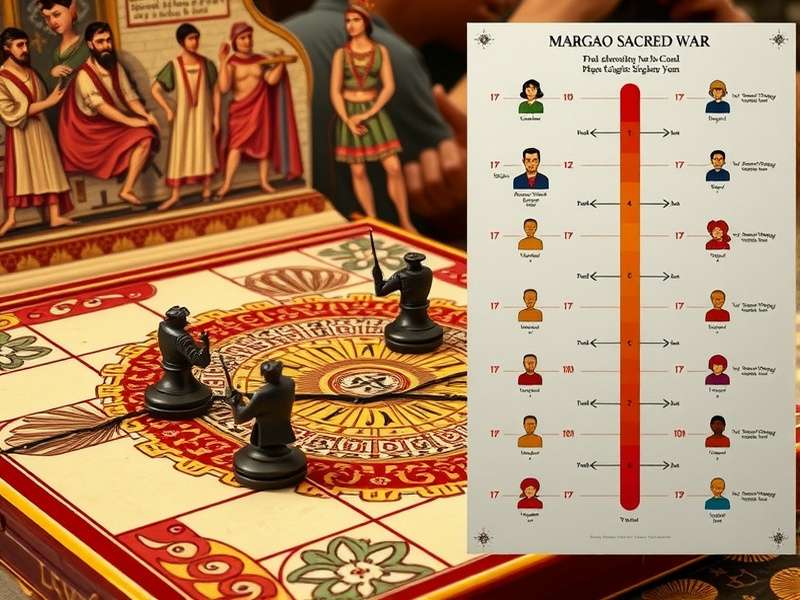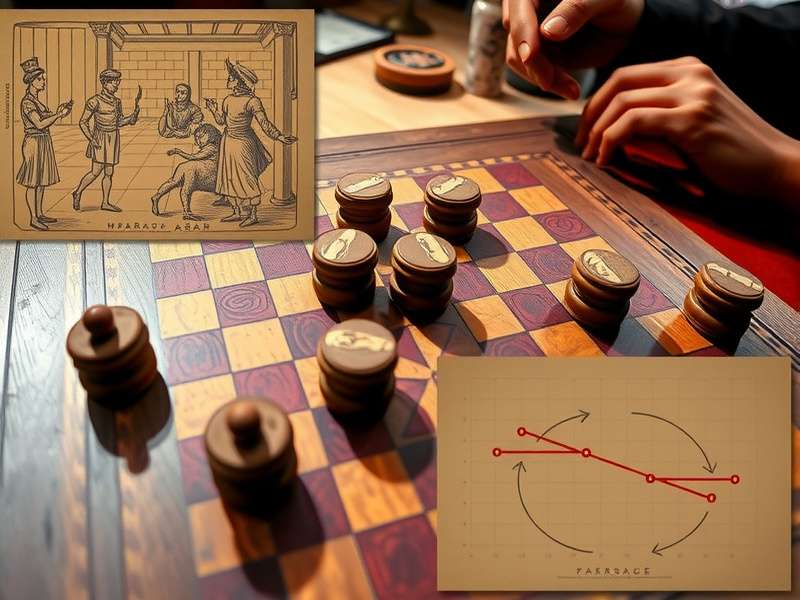Margao Sacred War: The Legendary Indian Strategic Game
Discover the rich history, intricate rules, and cultural significance of this traditional Indian war game that has captivated players for centuries.
Table of Contents
Overview of Margao Sacred War
Margao Sacred Warrepresents one of India's most sophisticated traditional strategy games, originating from the western coastal regions of the country. This intellectually demanding game combines elements of warfare simulation, territorial control, and resource management within a framework that reflects historical Indian military tactics.
The game is traditionally played on an elaborately designed board representing a stylized battlefield, with players commanding armies of distinct pieces that move according to specific patterns. What setsMargao Sacred Warapart from other strategy games is its incorporation of spiritual and philosophical elements, where strategic decisions are influenced by traditional Indian concepts of dharma and karma.

Players ofMargao Sacred Warengage in a mental battle that requires foresight, adaptability, and an understanding of complex positional relationships. The game typically lasts between 45 minutes to several hours, depending on the skill level of the participants and the specific variant being played.
Key Characteristics
Game Type:Abstract strategy, War simulation
Players:2-4 players
Playing Time:45 minutes to 3 hours
Complexity:High strategic depth
Age Range:14 years and above
Historical Origins & Development
The origins ofMargao Sacred Warcan be traced back to the 16th century in the region surrounding modern-day Goa and Karnataka. Historical records suggest the game was developed by military strategists and scholars who sought to create a training tool that could simulate battlefield conditions while incorporating philosophical principles.
During the 17th century,Margao Sacred Wargained popularity among the aristocracy and educated classes across western India. The game became particularly associated with the Maratha Empire, where it was reportedly played by military commanders including Shivaji Maharaj and his advisors as a means of honing strategic thinking.

The colonial period saw a decline in the practice of traditional Indian games, includingMargao Sacred War, as Western games gained prominence. However, the game survived in rural areas and among certain families who preserved the knowledge through oral tradition and handwritten manuscripts detailing the rules and strategies.
In the post-independence era, there has been a renewed interest in traditional Indian games, leading to a revival ofMargao Sacred War. Cultural organizations and game historians have worked to document the various regional variations and standardize the rules for contemporary play.
The 21st century has seenMargao Sacred Wargain international recognition, with tournaments being organized in various countries and digital adaptations making the game accessible to a global audience. This represents a significant achievement in the preservation and promotion of India's intangible cultural heritage.
Complete Game Rules & Mechanics
The traditionalMargao Sacred Waris played on a square board divided into 144 smaller squares (12x12 grid), though regional variations may use different board sizes. The board is typically made of cloth or carved wood, with intricate patterns that hold symbolic meaning in Indian culture.
Game Components
Each player commands an army consisting of several types of pieces, each with unique movement capabilities:
- Raja (King):The most important piece that must be protected at all costs
- Mantri (Minister):Advisors with diagonal movement capabilities
- Gaja (Elephant):Powerful pieces that can move multiple spaces in any direction
- Ashva (Horse):Knights with L-shaped movement patterns
- Ratha (Chariot):Pieces that move orthogonally any number of spaces
- Padati (Foot Soldiers):Basic pieces with limited forward movement
Setup and Initial Placement
The game begins with players arranging their pieces on opposite sides of the board according to traditional formations that have been passed down through generations. The exact starting positions may vary between different schools of play, but certain symmetrical patterns are consistently maintained.

Turn Structure and Movement
Players alternate turns, moving one piece per turn according to its specific movement rules. Capturing is typically done by displacement, where a moving piece lands on a square occupied by an opponent's piece, removing that piece from the game.
Special rules inMargao Sacred Warinclude the "Dharma Move," where players can occasionally make unconventional moves that reflect strategic wisdom rather than standard piece movement, and the "Karma Rule," which introduces elements of chance that can alter the game state based on previous player decisions.
Victory Conditions
A player wins the game by achieving one of several possible victory conditions:
- Checkmating the opponent's Raja (similar to chess)
- Capturing a predetermined number of the opponent's key pieces
- Occupying sacred positions on the board for a consecutive number of turns
- Forcing the opponent into a position where they cannot make a legal move
Important Rule Variations
Different regions and communities have developed their own variations ofMargao Sacred Warrules. The Konkani variation emphasizes faster gameplay with fewer pieces, while the Deccani variation includes additional piece types and more complex victory conditions. Tournament play typically uses a standardized rule set that incorporates elements from multiple traditions.
Advanced Strategy & Tactics
MasteringMargao Sacred Warrequires developing a deep understanding of positional play, tactical patterns, and long-term strategic planning. Expert players often spend years studying classic games and developing their personal approach to the game.
Opening Principles
The initial phase ofMargao Sacred Warfocuses on establishing control over key areas of the board while developing pieces to active positions. Traditional opening strategies include:
- The Lotus Formation:A defensive setup that protects the Raja while allowing flexible piece development
- The Tiger's Pounce:An aggressive opening that immediately threatens the opponent's position
- The River Crossing:A balanced approach that focuses on controlling the center of the board
Middle Game Tactics
Once pieces are developed, players transition to the middle game where tactical combinations and strategic plans take precedence. Key tactical motifs inMargao Sacred Warinclude:
- Pin:Restricting the movement of an opponent's piece by threatening a more valuable piece behind it
- Fork:Attacking multiple opponent pieces simultaneously with a single move
- Sacrifice:Intentionally giving up material to achieve a positional or tactical advantage
- Zwischenzug:An intermediate move that changes the situation before completing the expected sequence
Endgame Techniques
As the game progresses and material is reduced, precise technique becomes increasingly important. Endgame mastery inMargao Sacred Warinvolves:
- Understanding piece coordination with limited material
- Utilizing the Raja as an active piece in the endgame
- Converting small advantages into winning positions
- Recognizing theoretical drawn positions and either avoiding or forcing them as appropriate
Strategic Wisdom from Masters
Ancient texts onMargao Sacred Warstrategy emphasize the importance of patience, adaptability, and understanding your opponent's mindset. One famous maxim states: "The superior player wins before the battle begins," highlighting the importance of psychological preparation and strategic foresight in achieving victory.
Cultural Significance & Modern Revival
Margao Sacred Warholds a special place in India's cultural heritage as both an intellectual pursuit and a reflection of historical military strategy. The game has been referenced in literature, poetry, and art throughout the centuries, serving as a metaphor for the challenges and strategies of life itself.
Philosophical Dimensions
Beyond its function as entertainment,Margao Sacred Warembodies important philosophical concepts from Indian tradition. The game's structure reflects the Hindu concept of dharma (duty/righteousness) through the specific roles and responsibilities assigned to each piece type.
The concept of karma is integrated into certain rule variations, where previous decisions can have consequences later in the game. This philosophical depth distinguishesMargao Sacred Warfrom purely abstract strategy games and contributes to its enduring appeal.
Social and Educational Value
Traditionally,Margao Sacred Warserved as an educational tool for developing strategic thinking, patience, and decision-making skills. In many communities, elders would teach the game to younger generations as part of their cultural education.
The social aspect of the game has always been important, with games often serving as focal points for community gatherings and intellectual discourse. This social dimension continues in modern times, with clubs and tournaments bringing together enthusiasts from diverse backgrounds.
Contemporary Revival and Global Reach
In recent decades, there has been a concerted effort to revive and promoteMargao Sacred Waras part of India's cultural renaissance. Organizations such as the Traditional Games Society of India have worked to document rules, organize tournaments, and create educational materials about the game.
The digital age has opened new possibilities forMargao Sacred War, with mobile apps and online platforms making the game accessible to international audiences. This global reach has led to cross-cultural exchanges and the development of new strategic approaches to the game.
Modern Tournaments and Recognition
AnnualMargao Sacred Wartournaments are now held in several Indian cities, with growing international participation. The game has gained recognition from cultural preservation organizations and has been featured in exhibitions on traditional games worldwide. Efforts are underway to haveMargao Sacred Warrecognized as an intangible cultural heritage by UNESCO.
The enduring legacy ofMargao Sacred Wardemonstrates the timeless appeal of strategic challenges and the importance of preserving traditional intellectual pursuits. As both a game and a cultural artifact, it continues to inspire new generations of players while connecting them to India's rich historical traditions.
Conclusion
Margao Sacred Warstands as a testament to India's rich intellectual heritage, offering a gaming experience that combines deep strategic complexity with cultural and philosophical significance. From its historical origins to its contemporary revival, the game has maintained its appeal across centuries by challenging players to develop their tactical awareness, foresight, and understanding of complex systems.
As interest in traditional games continues to grow worldwide,Margao Sacred Warrepresents both a preservation of cultural memory and a living tradition that evolves with each new generation of players. Whether played on a traditional cloth board or through digital platforms, the game continues to offer the unique blend of intellectual challenge and cultural connection that has defined it for centuries.
The future ofMargao Sacred Warappears bright, with growing international recognition and renewed interest in traditional strategic games. As players around the world discover this gem of Indian intellectual heritage, the game's legacy is ensured for generations to come, continuing to challenge minds and connect people across cultures through the universal language of strategic play.